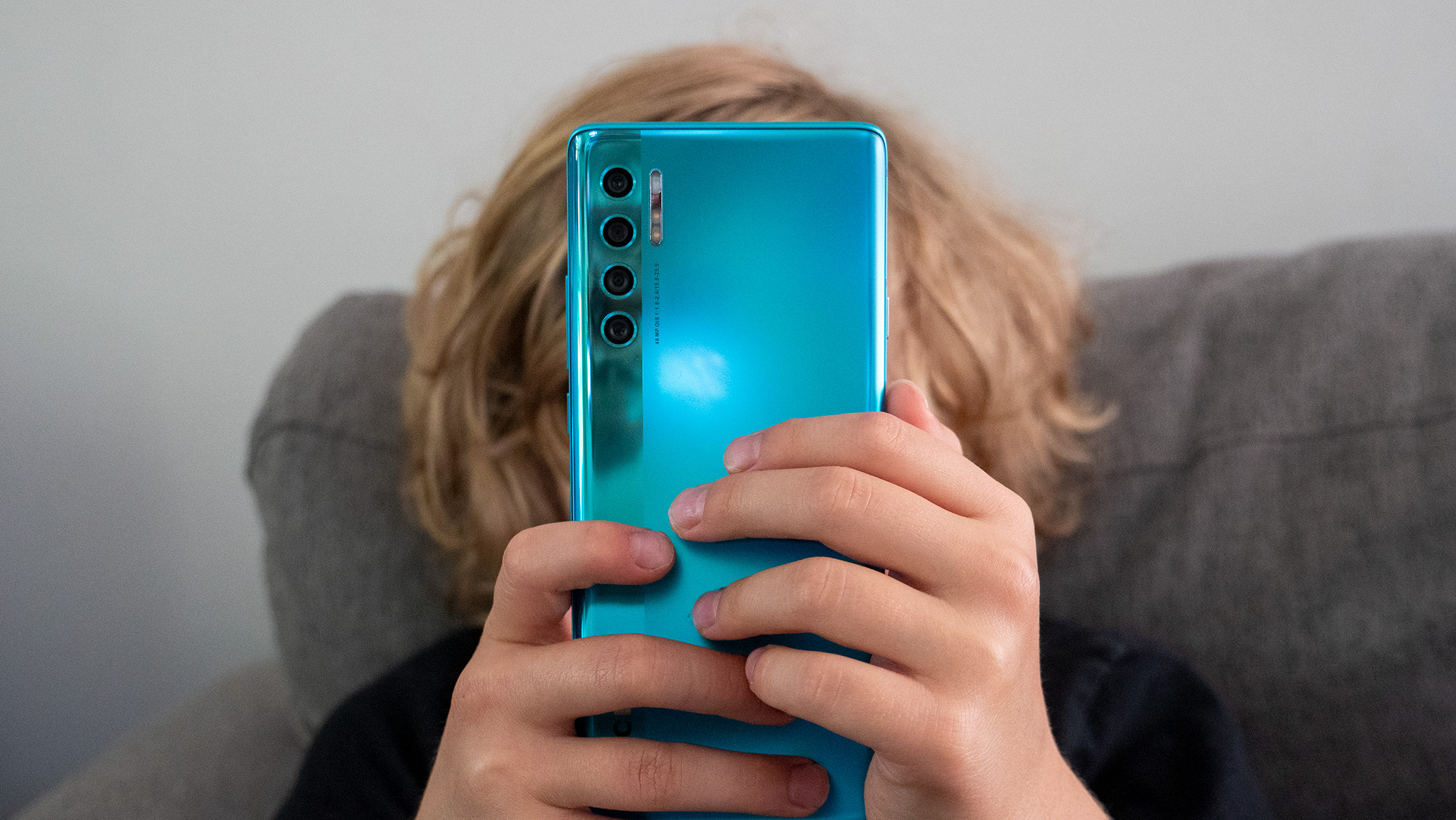Samsung Galaxy S22 Ultra vs. iPhone 13 Pro Max
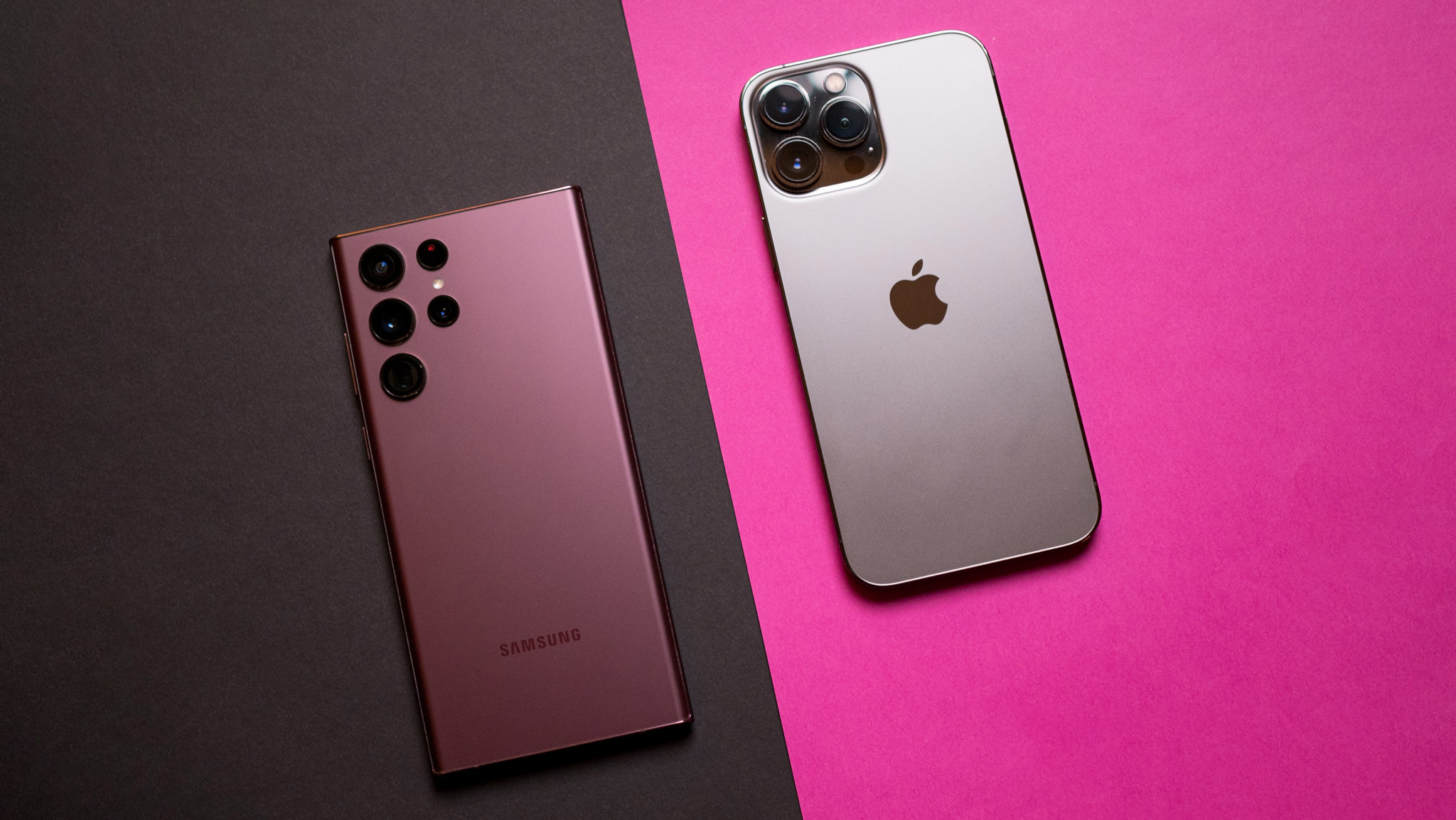
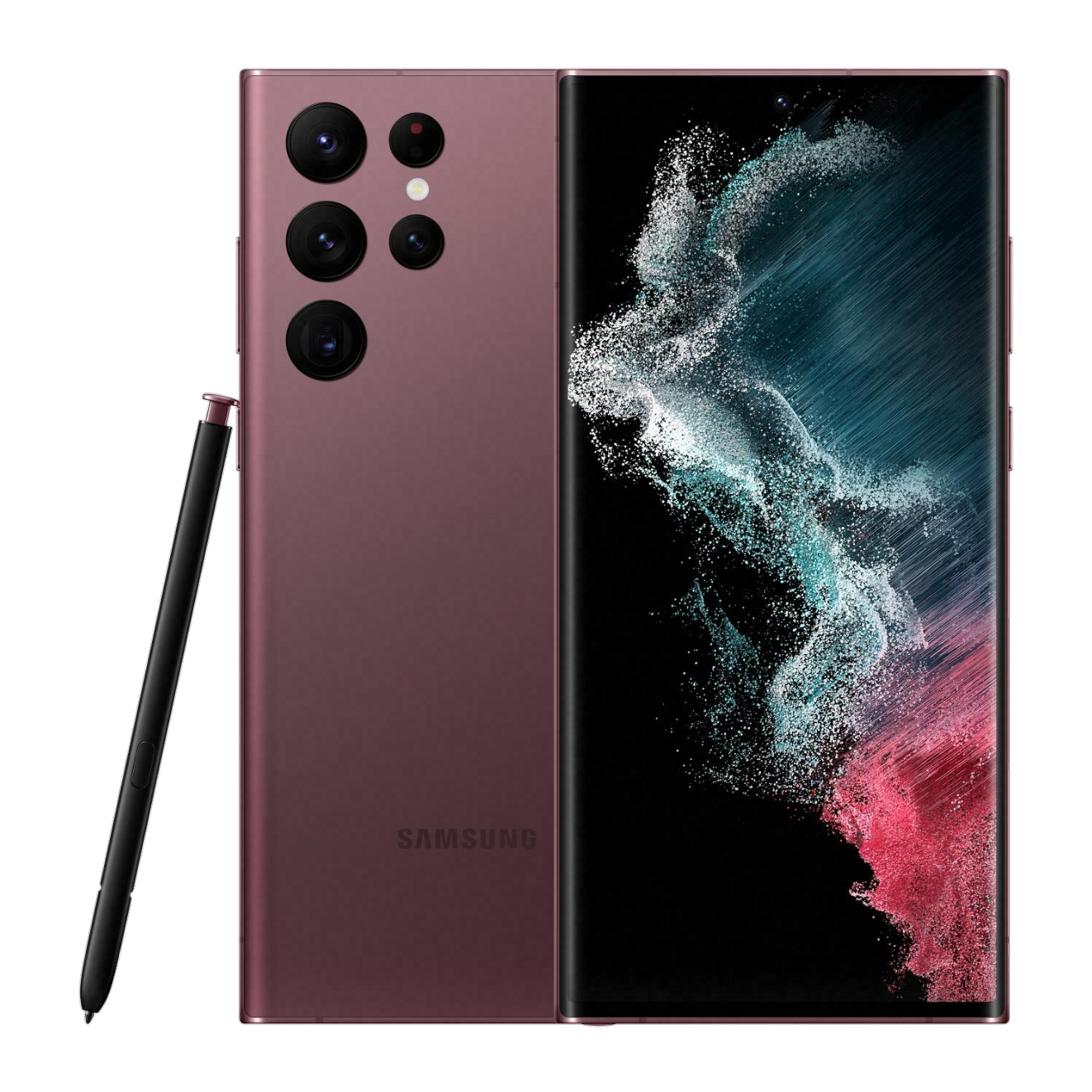
The Galaxy S22 Ultra combines a gorgeous design with incredible hardware, one of the best cameras on Android, class-leading software updates, and a large 120Hz AMOLED screen. Throw in the S Pen and you get the best flagship of 2022.
+ Outstanding 120Hz screen
+ Amazing hardware
+ Versatile cameras
+ Four guaranteed Android OS updates
+ 45W wired and 15W wireless charging
+ Integrated stylus
- No microSD slot
- No bundled charger
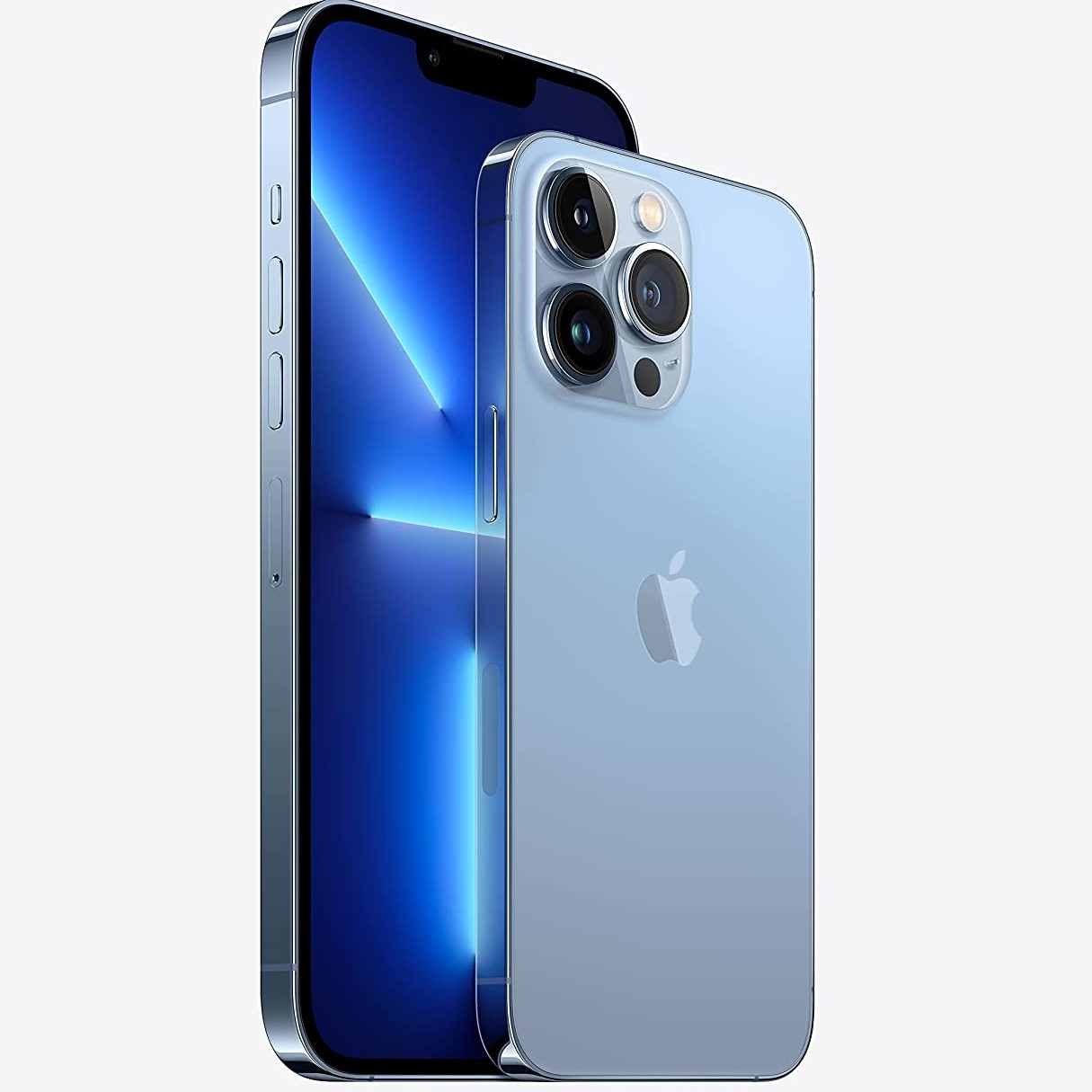
The iPhone 13 Pro Max is powered by the fastest mobile chipset in the market today, and you get phenomenal cameras, more software updates than any other phone, and all the extras. If you want to move to iOS, this is the phone to get.
+ Smooth 120Hz screen
+ Class-leading internal hardware
+ Stellar cameras
+ 20W wired and 15W wireless charging
+ At least five iOS platform updates
- No always-on display
- Uses Lightning port
- Ungainly notch
- No charger in the box
If you're interested in buying a flagship phone, the Galaxy S22 Ultra and the iPhone 13 Pro Max are two of the best choices at the moment. Samsung's 2022 flagship is powered by the latest Qualcomm chip, has a sublime 120Hz AMOLED screen with QHD+ resolution, standout cameras, large battery with all-day battery life, and you even get an integrated stylus.
The Galaxy S22 Ultra is basically the follow-up to the Note 20 Ultra, with the only difference being that it is now sold as a Galaxy S device. And the iPhone 13 Pro Max isn't short on features either; it gets a 120Hz OLED screen, the A15 Bionic is arguably the fastest mobile platform around, the cameras are even better this time around, and it lasts well over a day with heavy use.
Both phones start at over $1,000, so let's take a look at what you're getting with either device, and which phone you should pick up.
Samsung Galaxy S22 Ultra vs. iPhone 13 Pro Max: Design
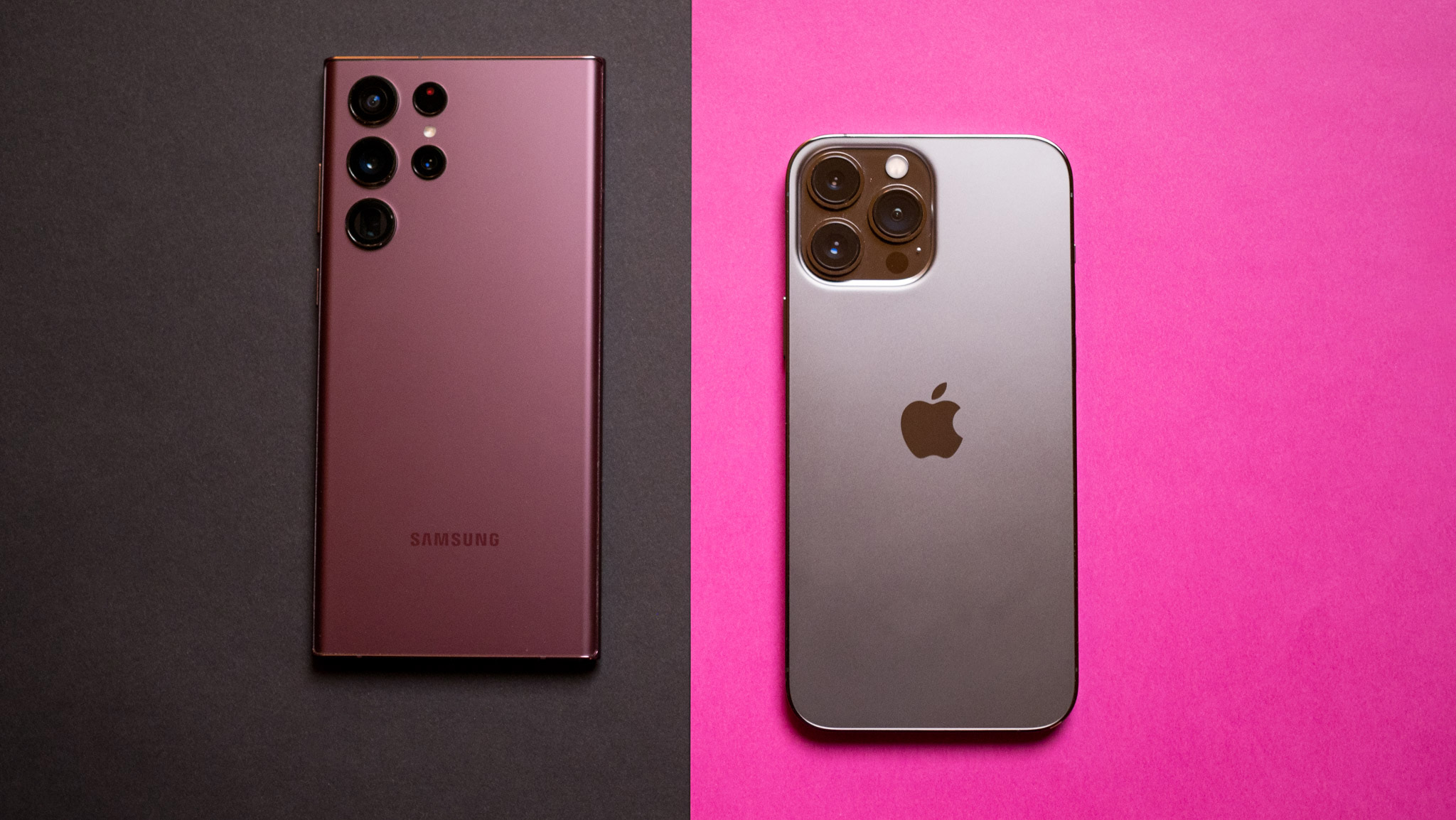
These are two of the biggest phones in the market today, and they sport familiar designs. The Galaxy S22 Ultra follows a similar aesthetic as the Galaxy Note 20 Ultra, so you get a large screen that's tall and wide.
There are smooth flowing curves at the front and back, and they go a long way in ensuring the S22 Ultra is comfortable to hold and use. The burgundy color variant makes the phone look upmarket, and at the back you'll find a new camera layout with individual modules jutting out directly from the chassis.
The Galaxy S22 Ultra is larger of the two phones, but it is also more comfortable to use thanks to dual curved sides.
The Galaxy S22 Ultra should feel immediately familiar if you've used a Note phone in the past, and while it has a dual curved screen, the curvature is fairly minimal, and there's more than enough room on the sides to hold the device.
On the subject of familiarity, the iPhone 13 Pro Max has a largely unchanged design from its predecessor, offering a rectangular chassis with flat sides. Round the back, you'll find a glass back with a matte finish and a large camera island with three rings for the camera modules.
Get the latest news from Android Central, your trusted companion in the world of Android
At 78.1mm wide, it comes in slightly larger than the S22 Ultra (77.9mm), and you'll notice that in day-to-day use. The iPhone lacks curved sides, so it isn't anywhere as comfortable to use as the S22 Ultra, and even though it is thinner at 7.7mm (the S22 Ultra comes in at 8.9mm), it is heavier at 240g (versus 228g).
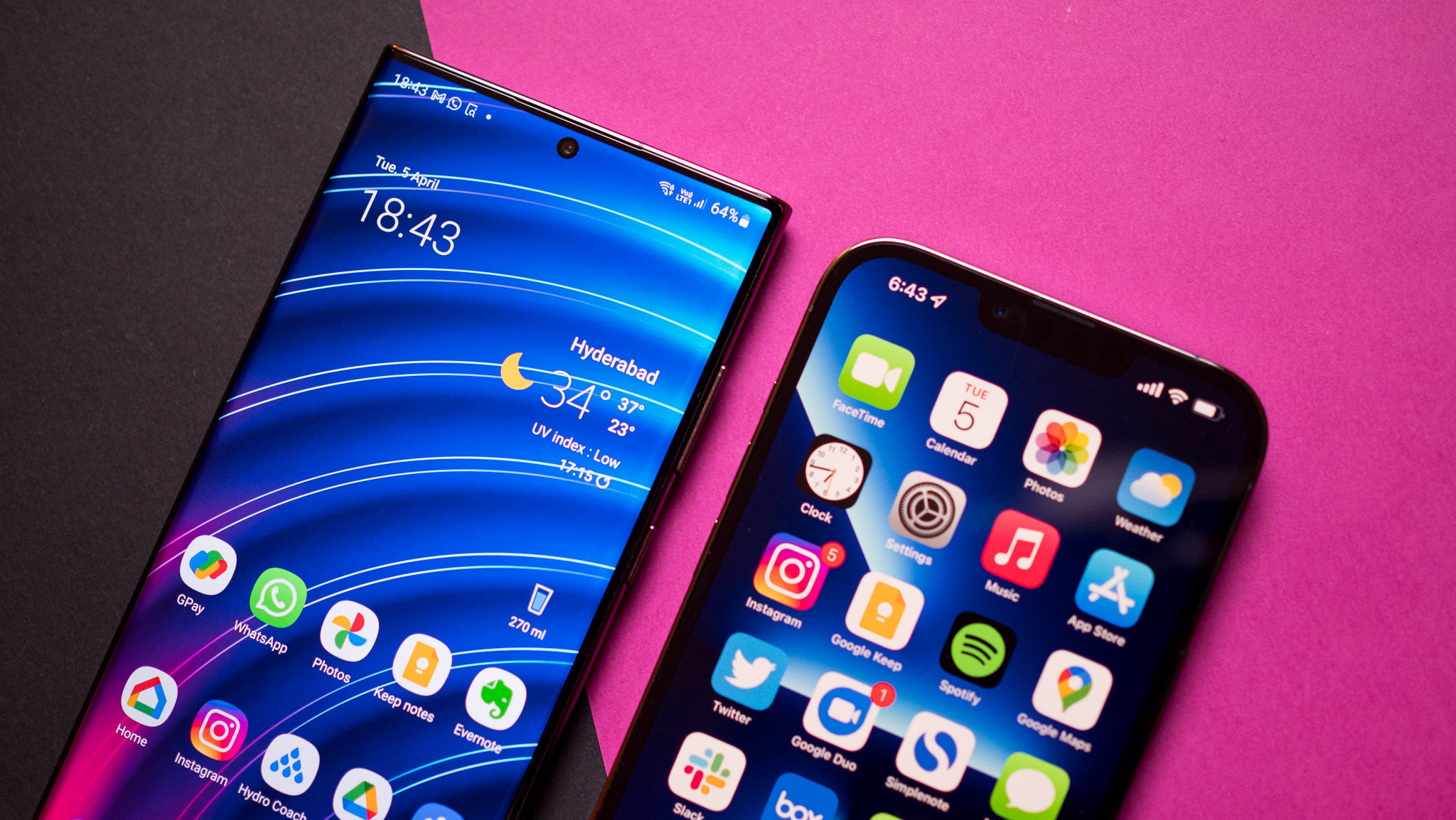

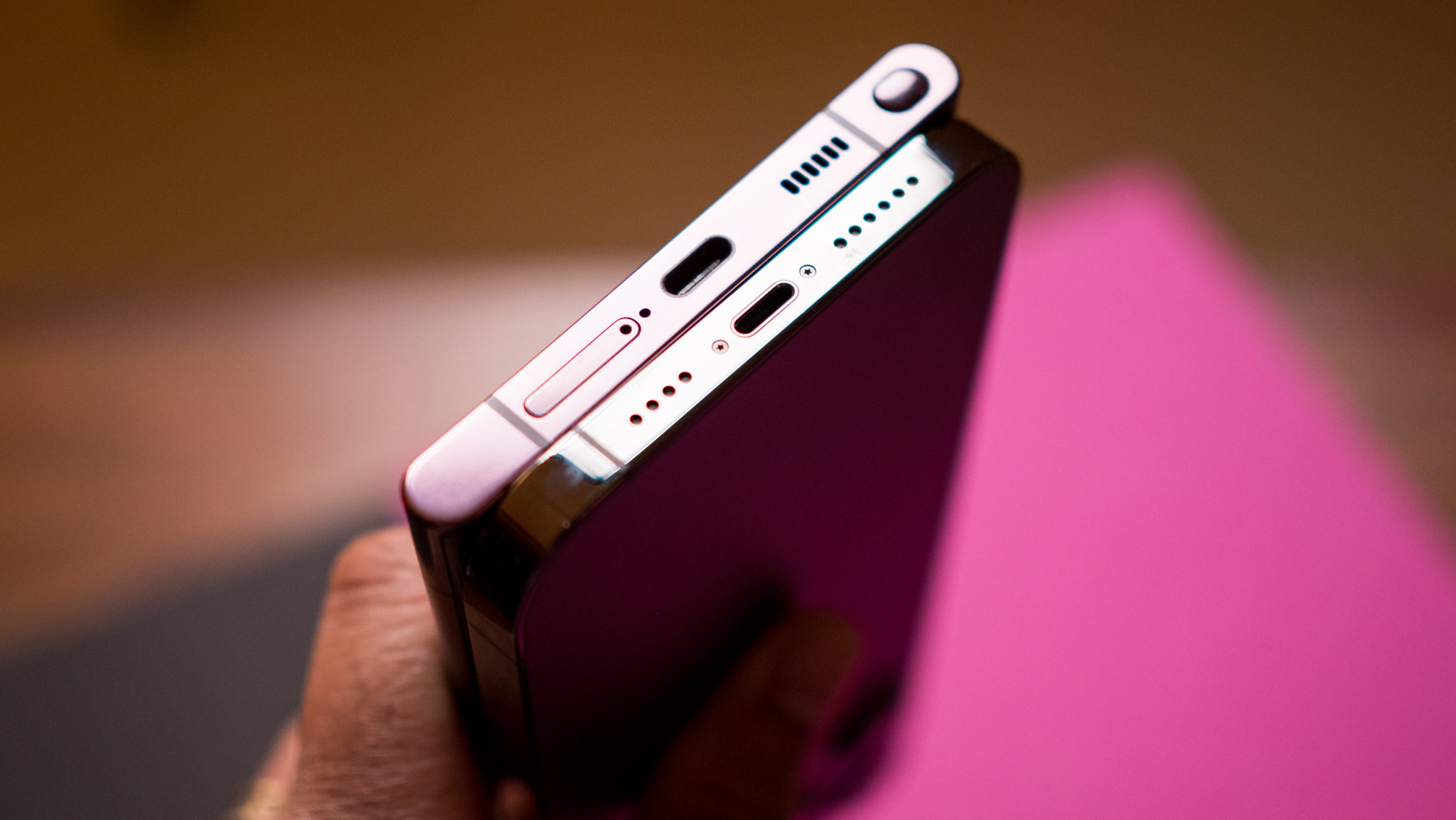
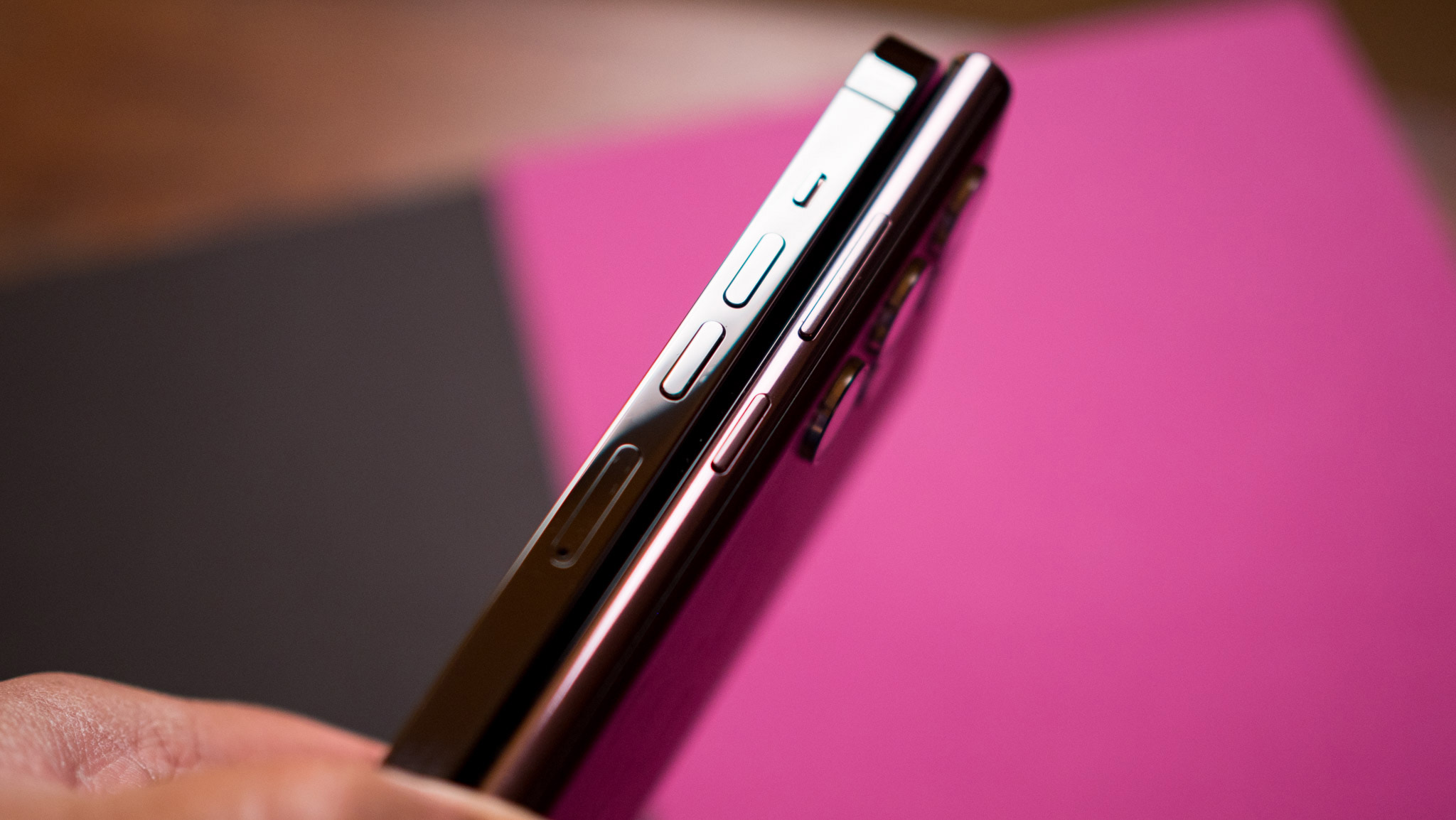
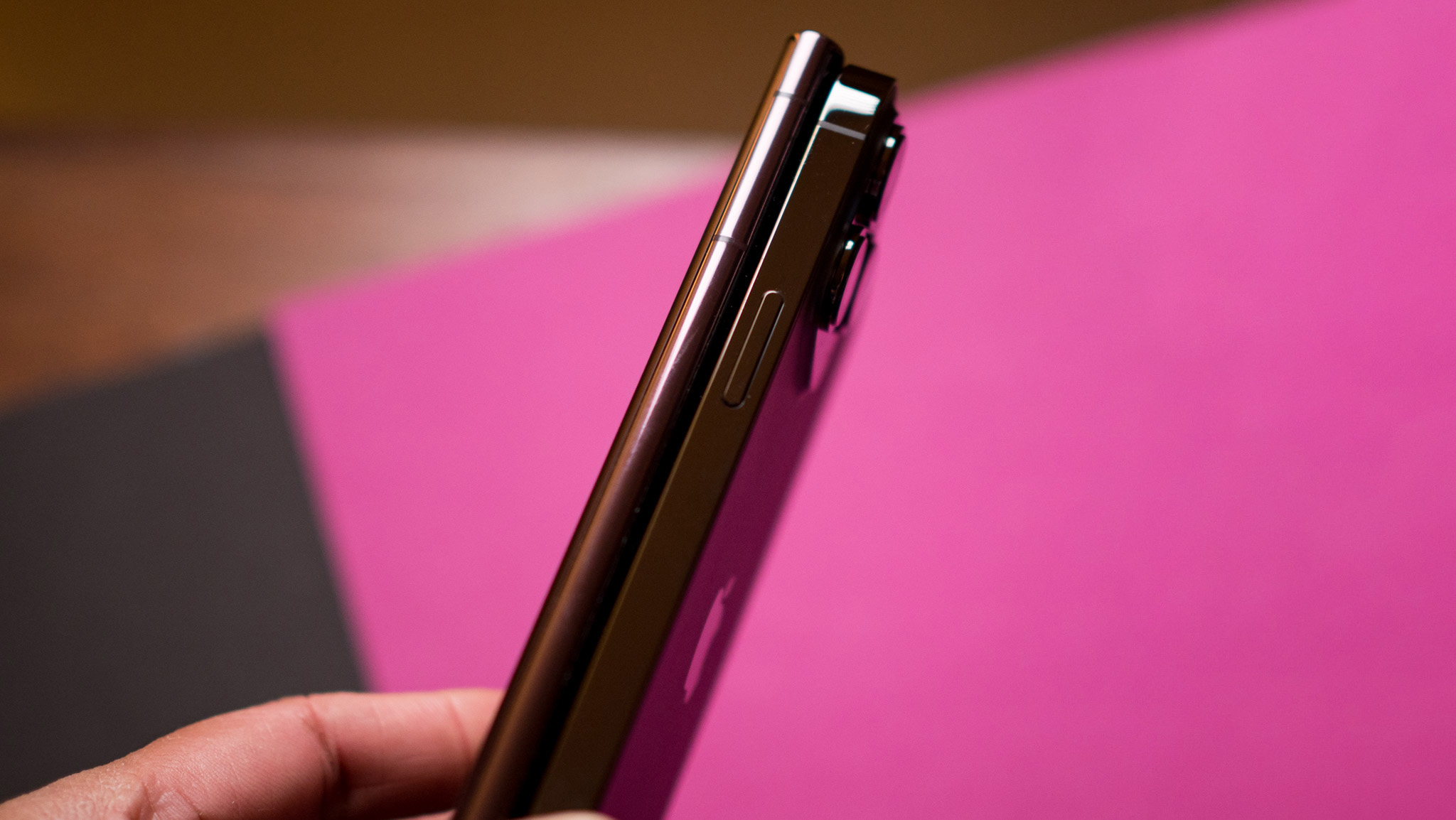
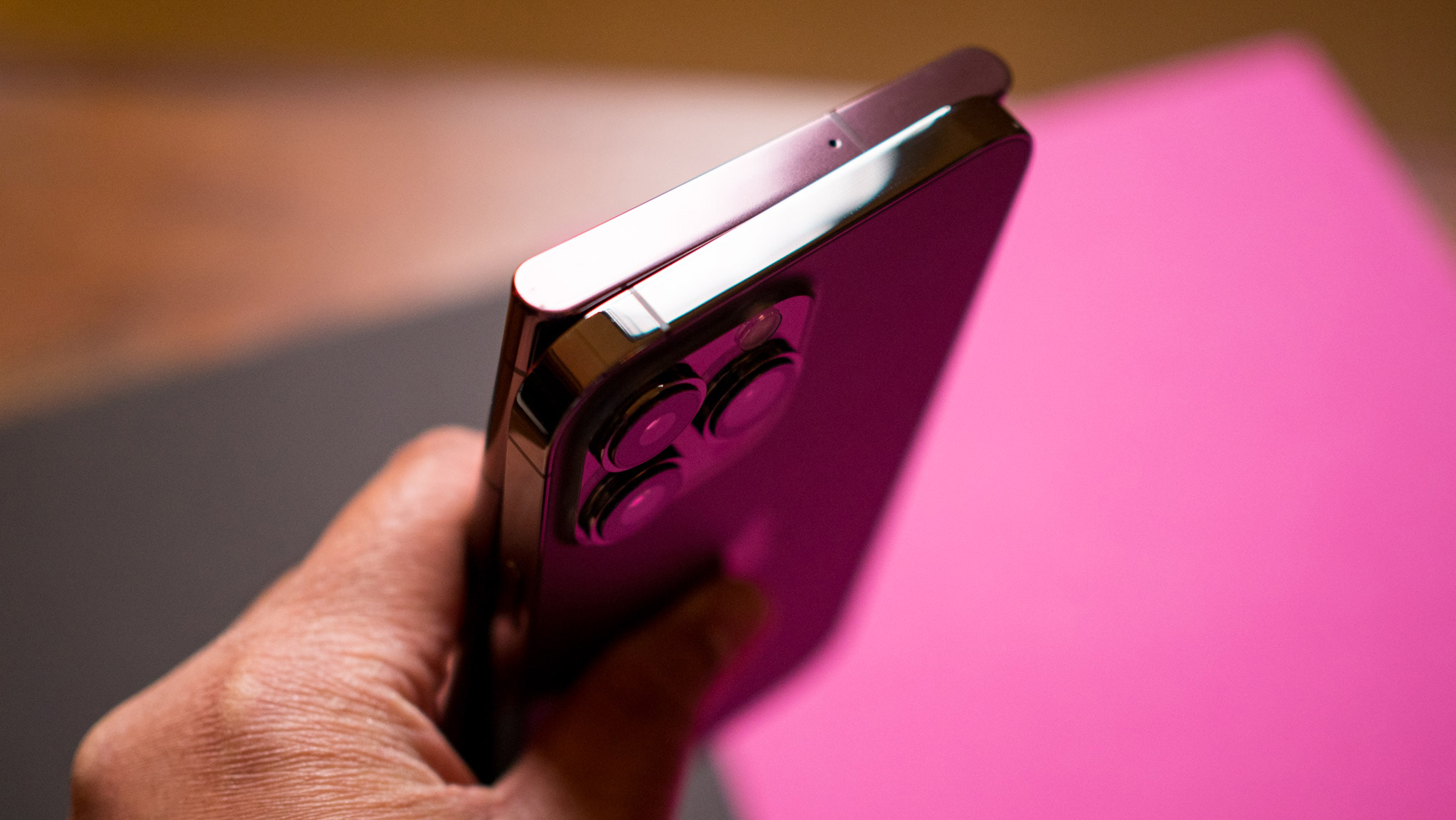
The S22 Ultra has a layer of Corning's latest Gorilla Glass Victus+ for the front and back panes of glass, while the iPhone 13 Pro Max comes with a custom version of Gorilla Glass that's touted to be among the toughest in the industry.
I tested the Victus+ layer on my S22 Ultra recently; it fell flat onto tiled floor from a height of 5 feet but came away unscathed.
I definitely prefer the Galaxy S22 Ultra on the design front; it's just easier to use and fits better in your hand. You'll need to invest in a case if you want to use the iPhone.
Samsung Galaxy S22 Ultra vs. iPhone 13 Pro Max: Screen
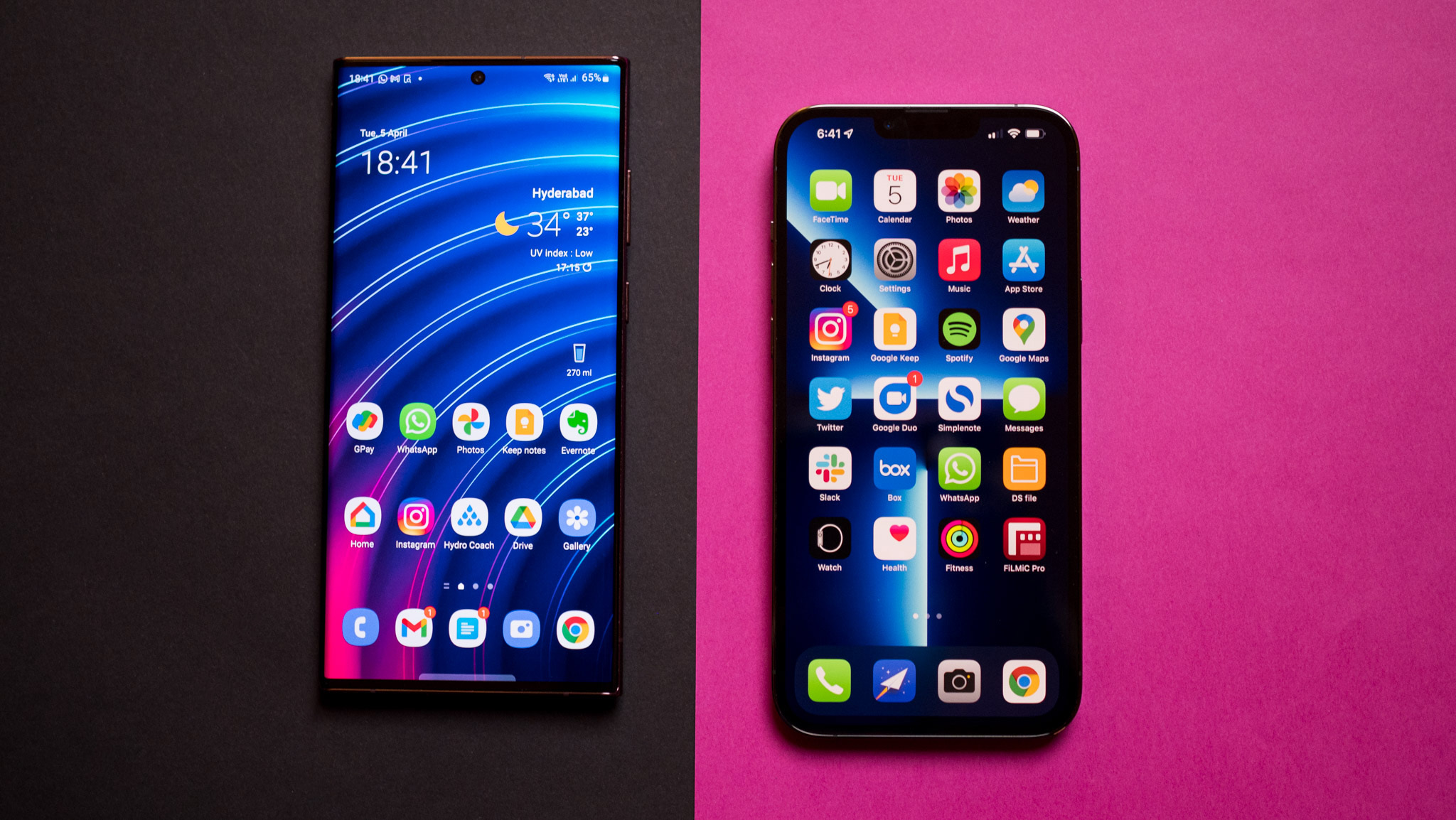
Both phones have vibrant screens with the latest tech. The Galaxy S22 Ultra features a 6.8-inch AMOLED panel with a QHD+ (3088x1440) resolution, and it has 120Hz refresh rate, HDR10+, and maximum brightness that goes up to 1,750 nits for HDR content and 1,200 nits for daily use.
The iPhone 13 Pro Max has a 6.7-inch OLED screen with a resolution of 2778x1284, and it includes Dolby Vision, HDR10, and maximum brightness of 1,200 nits. In a first for the series, the phone gets 120Hz refresh which dynamically scales based on the content you're viewing.
These are two of the best screens you'll find today: both phones go up to 120Hz and have HDR10+ along with stereo sound.
Samsung also has a similar feature, with the S22 Ultra able to go from 1Hz to 120Hz. You won't find a vast catalog of games that run at 120Hz, but for most day-to-day use cases, you'll see an immediate difference when switching from a phone with a regular 60Hz screen.
As for the quality, these are two of the best OLED screens you'll find on any phone today. Regardless of whatever you're doing — scrolling through social media, playing games, or streaming videos — you'll find both screens to be very enjoyable.
One feature that's missing on the iPhone is always-on mode; although recent iPhones come with OLED screens, iOS still doesn't have a way to preview notifications and view the time and battery details when the screen is off.
There's stereo sound on both devices, and that makes a lot of difference particularly when you're playing games. The S22 Ultra gets just a little bit louder and is more detailed, but the iPhone holds its own.
Samsung Galaxy S22 Ultra vs. iPhone 13 Pro Max: Hardware and battery life
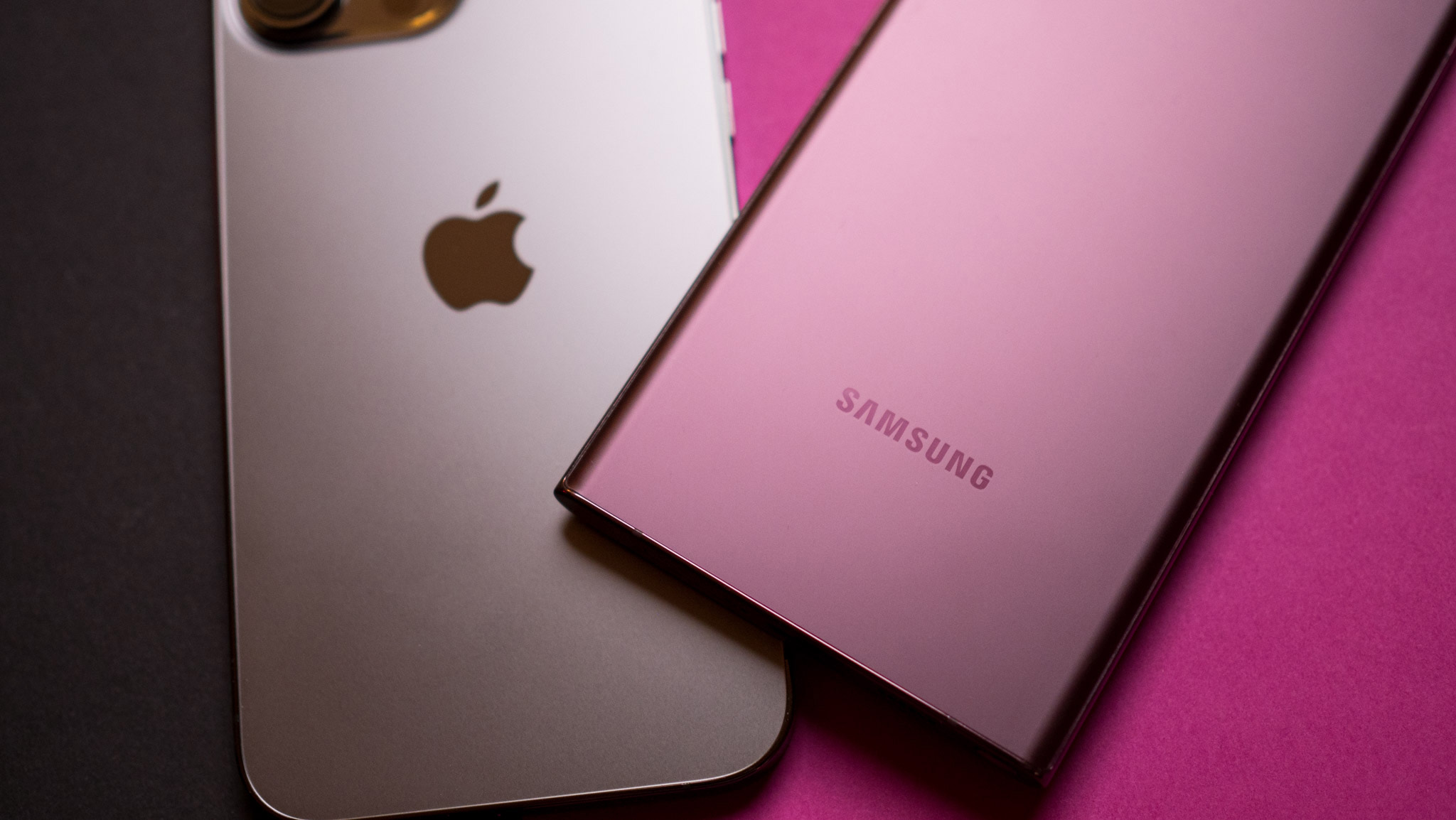
These are two of the costliest phones you can buy today, and they're packed to the gills with features. Both phones have the basics: you get IP68 dust and water resistance as well as 15W wireless charging as standard.
As for the hardware itself, you'll find two of the best mobile chipsets in the market today. Qualcomm's 4nm Snapdragon 8 Gen 1 is a powerhouse that handles anything you throw at it with ease, including demanding games.
There's no scenario where the Galaxy S22 Ultra feels slow or laggy, and that won't change for several years. The best Android phones all feature the Snapdragon 8 Gen 1, and in terms of hardware, the S22 Ultra ticks all the right boxes.
With the iPhone 13 Pro Max, the A15 Bionic has the distinction of offering the best single- and multi-core scores in the industry, so you're looking at figures that outmatch the best that Qualcomm has to offer.
| Category | Galaxy S22 Ultra | iPhone 13 Pro Max |
|---|---|---|
| Operating system | Android 12, One UI 4.1 | iOS 15.4 |
| Display | 6.8-inch 120Hz LTPO AMOLED, 3088x1440, HDR10+, Gorilla Glass Victus+ | 6.7-inch 120Hz OLED, 2778x1284, HDR10+ Dolby Vision, Corning glass |
| Chipset | Snapdragon 8 Gen 1, 1 x 2.8GHz Cortex X2, 3 x 2.50GHz Cortex A710, 4 x 1.80GHz Cortex A510, Adreno 730, 4nm | A15 Bionic, 2 x 3.22GHz Avalanche, 4 x 2.2GHz Blizzard, 5nm |
| RAM | 8GB | 6GB |
| Storage | 128GB/256GB/512GB/1TB, UFS 3.1 | 128GB/256GB/512GB/1TB |
| MicroSD slot | ❌ | ❌ |
| Rear camera 1 | 108MP, f/1.8, 0.8um, OIS, PDAF, 8K at 24fps, 4K at 60fps | 12MP, f/1.5, 1.9um, OIS, PDAF, 4K at 60fps |
| Rear camera 2 | 12MP, f/2.2, 1.12um, 120-degree wide-angle | 12MP, f/1.8, 120-degree wide-angle |
| Rear camera 3 | 10MP, f/4.9 1.12um, OIS, PDAF, 10x optical zoom | 12MP, f/2.8, OIS, PDAF, 3x optical zoom |
| Rear camera 4 | 10MP f/2.4 1.12um, OIS, PDAF, 3x optical zoom | ToF LiDAR module |
| Front camera | 40MP, f/2.2, 0.7um, autofocus, 4K at 60fp | 12MP, f/2.2, autofocus, 4K at 60fps |
| Connectivity | 5G Sub-6/mmWave, SA and NSA, Wi-Fi 6E, Bluetooth 5.2, NFC, A-GPS, UWB | 5G Sub-6/mmWave, SA and NSA, Wi-Fi 6, Bluetooth 5.0, NFC, A-GPS, UWB |
| Audio | USB-C, stereo speakers | Lightning, stereo speakers |
| Battery | 5000mAh | 4352mAh |
| Charging | USB-C PD 3.0, 45W wired charging, 15W wireless charging | 27W wired charging, 15W MagSafe wireless charging |
| Water resistance | IP68 | IP68 |
| Security | In-display fingerprint (optical) | Face ID |
| Colors | Black, White, Burgundy | Gold, Silver, Sierra Blue |
| Dimensions | 163.3 x 77.9 x 8.9mm, 228g | 160.8 x 78.1 x 7.7mm, 240g |
It's not just the A15 Bionic that makes the iPhone stand out; games are generally better optimized for iOS, and visually-intensive titles are a delight to play on the device.
However, where Samsung wins out is productivity. This comes down to the fact that you get an integrated stylus. The S Pen is back, and it is just as noteworthy as previous iterations.
The iPhone 13 Pro Max is faster and lasts longer, but the S22 Ultra is the obvious choice for productivity.
You can take notes, doodle, remotely control the cameras, and do so much more with the stylus, and it makes the device a productivity powerhouse. It is a huge differentiator, and we're glad that Samsung reintroduced the stylus, this time with the Galaxy S series.
As for battery life, both phones manage to last over a day with ease, but the iPhone 13 Pro Max has a distinct edge in this area. That's down to the more efficient A15 Bionic and the fact that the phone has a larger battery. More often than not, you'll get a day and a half of use with a full charge.
The Galaxy S22 Ultra also lasts a full day with ease, but it doesn't quite last as long as the iPhone. That said, it has the edge on the charging front, offering 45W wired and 15W wireless charging as standard. With the iPhone, you get 27W wired and 15W MagSafe wireless charging, and in a sign of the times, neither phone comes with a bundled charger.
Samsung Galaxy S22 Ultra vs. iPhone 13 Pro Max: Cameras
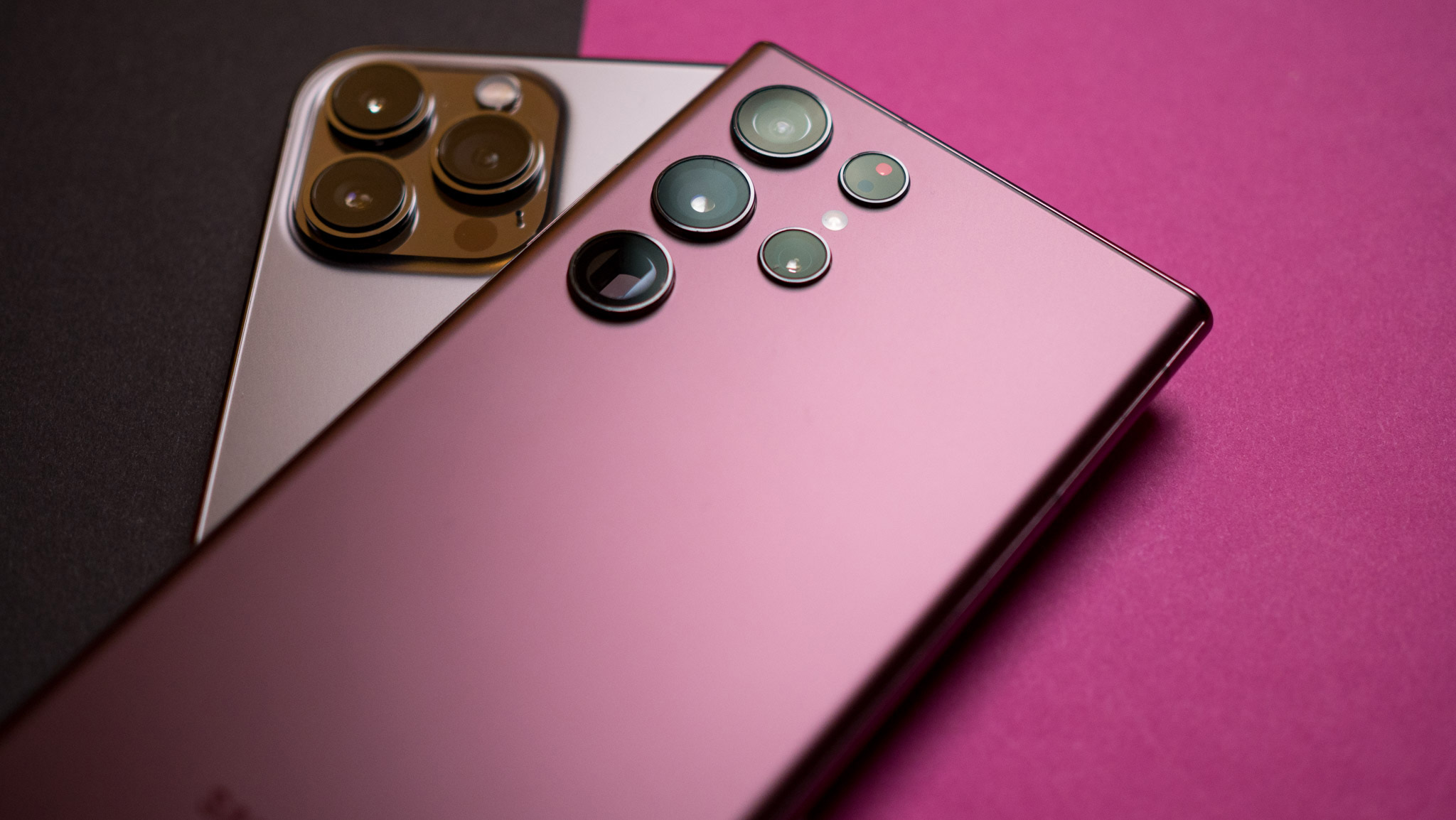
One of the main reasons for paying over $1,000 for a flagship is for the cameras, and in this area, both devices have a lot to offer. The S22 Ultra has four cameras in total: a 108MP main lens joined by a 12MP wide-angle with 120-degree field-of-view, and two 10MP zoom lenses, one with 3x optical zoom and another that goes up to 10x.
You'll find a trio of 12MP lenses on the iPhone 13 Pro Max, and there's also a time-of-flight module. Both devices have plenty of shooting modes and are packed with features. The S22 Ultra has 8K video recording, and the iPhone lets you record 10-bit HDR in 4K directly from the phone.
Both phones have their own style when it comes to photos, with Samsung going with brighter shots that have a little more detail. Samsung also delivers oversaturated colors, and even with the iPhone 13 Pro Max set to the Rich Contrast style, colors don't look as saturated.
Samsung defaults to shooting at a higher ISO in just about every situation, and as you can see, this makes a difference in low-light shots, where you get more detail in the shadows. The downside is that there's more noise than the iPhone 13 Pro Max, but on the whole, both phones do a stellar job in low-light scenarios.
The iPhone 13 Pro Max takes the lead when it comes to skin tones, preserving natural tones and accurate colors. This is noticeable in portrait shots, and while the S22 Ultra does a great job as well, it isn't quite on the same level. Similarly, the iPhone 13 Pro Max continues to lead when it comes to video recording, giving you the ability to record natively in Dolby Vision.
That said, the S22 Ultra is the phone to beat if you want versatile cameras. The wide-angle lens is just as good on both phones, but thanks to the secondary zoom lens, the S22 Ultra takes passable shots at up to a 30x zoom factor, which is just not possible on the iPhone 13 Pro Max.
Overall, these are two of the best phone cameras you'll find today. Both devices have high-res sensors that take brilliant photos in demanding situations, and there isn't an outright winner here.
Samsung Galaxy S22 Ultra vs. iPhone 13 Pro Max: Software
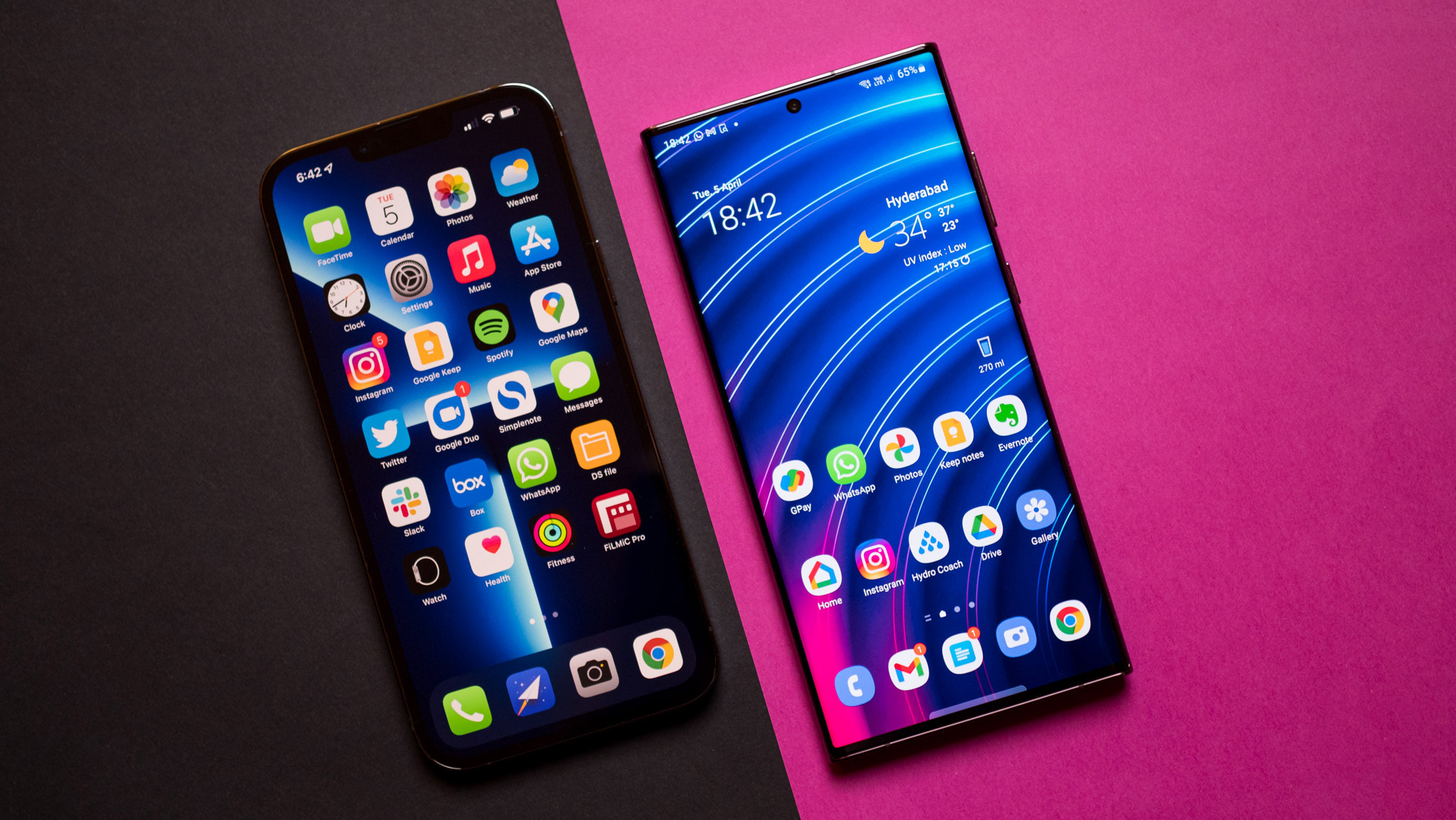
Two years ago, I would use a Samsung phone just for the duration of the review and switch out immediately to OxygenOS or MIUI. But Samsung made a lot of positive strides on the software front, so much so that I now go back to One UI after I'm done reviewing other phones.
In the last six months, I used the Galaxy Z Fold 3, S21 FE, and now the S22 Ultra as my daily drivers, and it's safe to say that One UI is my favorite Android skin.
There's a lot to like in iOS 15, but Samsung's One UI 4.1 gives you extensive customizability, plenty of useful features, and four guaranteed updates.
The S22 Ultra runs One UI 4.1 based on Android 12 out of the box, and while there isn't a lot of visual change over One UI 3.1, you'll find all the features Google introduced in Android 12. That includes recording indicators, privacy dashboard, under-the-hood tweaks, and much more. Samsung has its own verison of the Android 12 color picker feature, and it works well.
The iPhone 13 Pro Max launched with iOS 15 and is now making the switch to iOS 15.4. Among the additions is the ability to use Face ID with a mask, a feature that has been in the works for nearly two years. iOS 15.4 has plenty to offer, and from a feature point of view, it is on par with what you get with Android.
The only major difference you'll see is with notifications; there isn't much in the way of notification management, and that is the biggest learning curve if you're planning on switching over from Android to iOS.
Obviously, we're biased in favor of Android, but there is a lot to like in iOS 15.4. And as for updates, if there's one phone that comes close to meeting the iPhone's dominance in long-term software updates, it is the Galaxy S22 Ultra.
Samsung now guarantees four guaranteed Android OS updates and five years of security updates, and it effectively leads the field in this area — even Google doesn't deliver as many updates to its Pixels.
Samsung's update guarantee is a huge deal for Android because it extends the longevity of the S22 Ultra. The hardware on offer is designed to last several years without any issues, and more often than not, it's the software that becomes obsolete long before there are any hardware issues.
And even if you don't intend to use the S22 Ultra for four years, the phone will hold its resale value because of guaranteed updates. As for the iPhone, it is guaranteed to get at least five iOS platform updates.
Samsung Galaxy S22 Ultra vs. iPhone 13 Pro Max: Which should you buy?
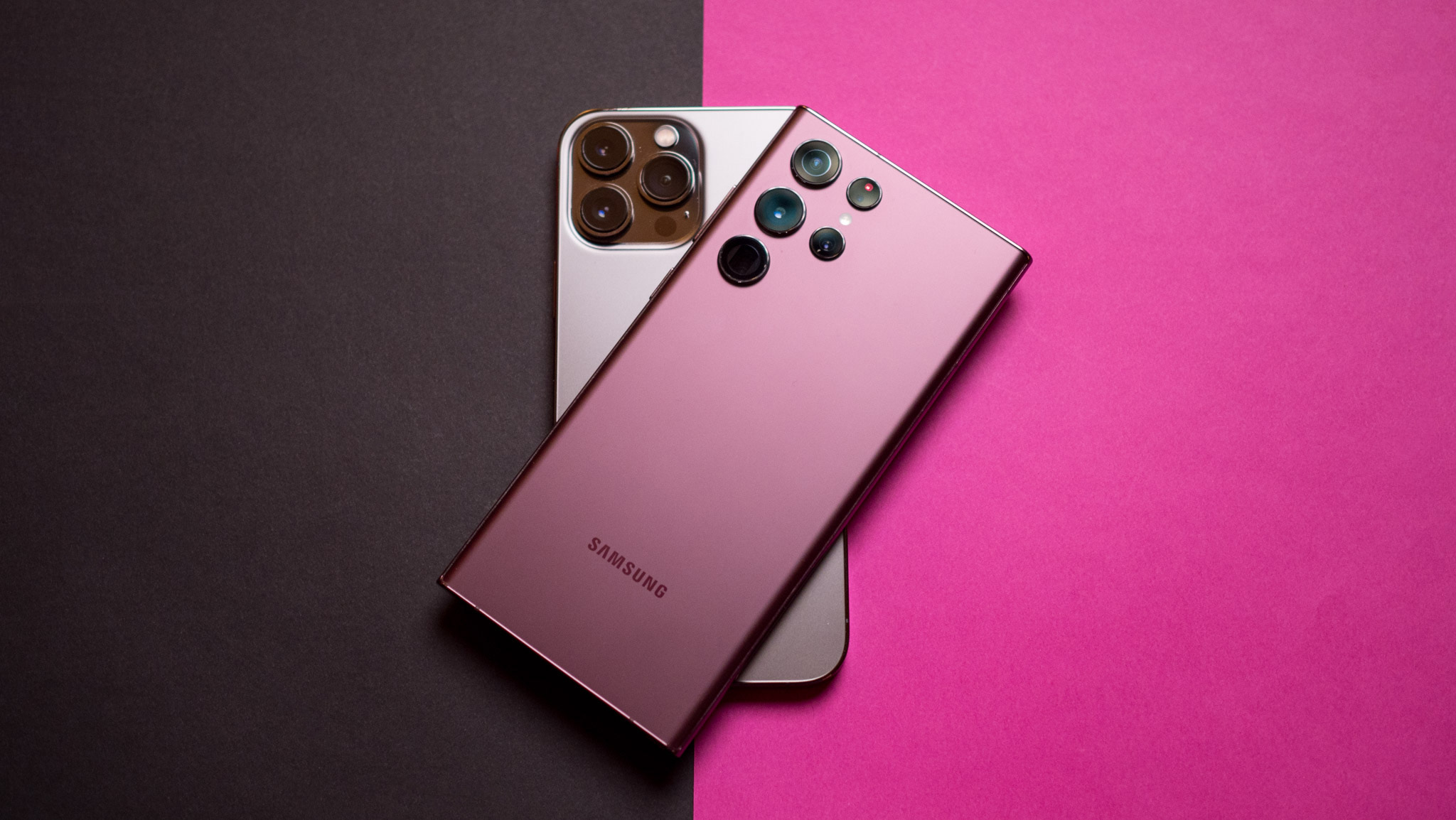
Honestly, picking between these two devices is entirely down to what you want from a software point of view. They have a lot going on the hardware front; you get amazing cameras, vibrant screens with fast refresh, internal hardware that's designed to last several years, and long-term software updates.
If you want the best Android phone, get the Galaxy S22 Ultra. If you're ready to switch to iOS, the iPhone 13 Pro Max is the obvious choice.
I used the iPhone 13 Pro Max as my secondary phone for the better part of six months now, and I like it quite a bit. There are a few areas where iOS continues to be annoying — particularly with notification management — but that shouldn't be a deterrent if you're interested in switching over to Apple's ecosystem.
And if you want to continue with Android, there's no phone better than the Galaxy S22 Ultra at the moment. I used the S22 Ultra for a month before switching to the Find X5 Pro, Xiaomi 12 Pro, and other 2022 Android flagships, and Samsung's combination of hardware, design, screen prowess, cameras, and software is unmatched. Throw in the productivity features and the S22 Ultra is a no-brainer.

Harish Jonnalagadda is Android Central's Senior Editor overseeing mobile coverage. In his current role, he leads the site's coverage of Chinese phone brands, networking products, and AV gear. He has been testing phones for over a decade, and has extensive experience in mobile hardware and the global semiconductor industry. Contact him on Twitter at @chunkynerd.
